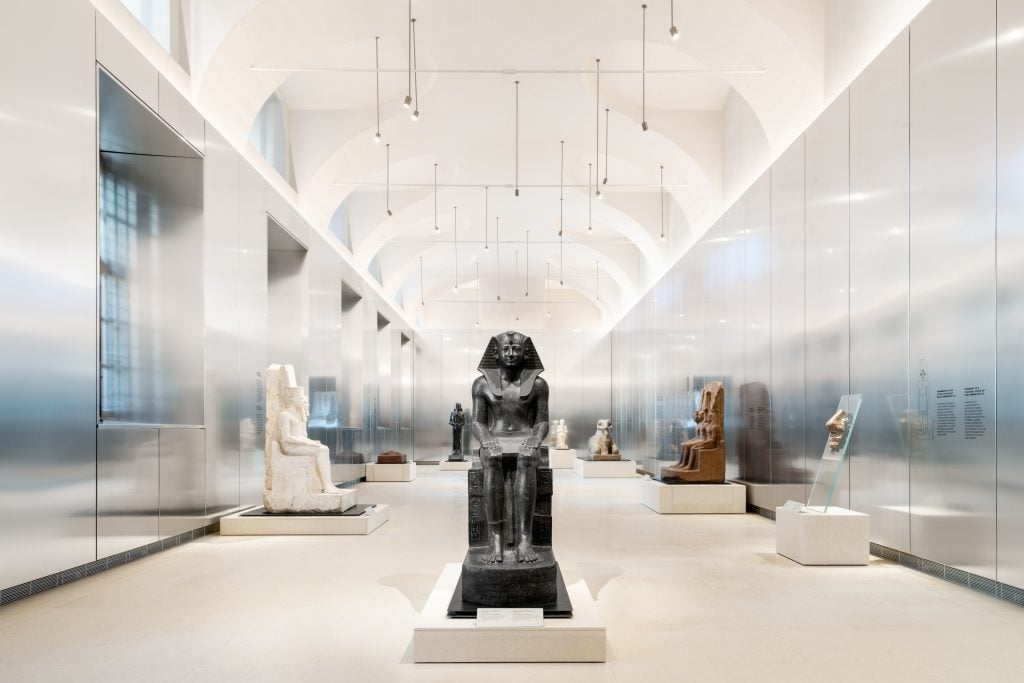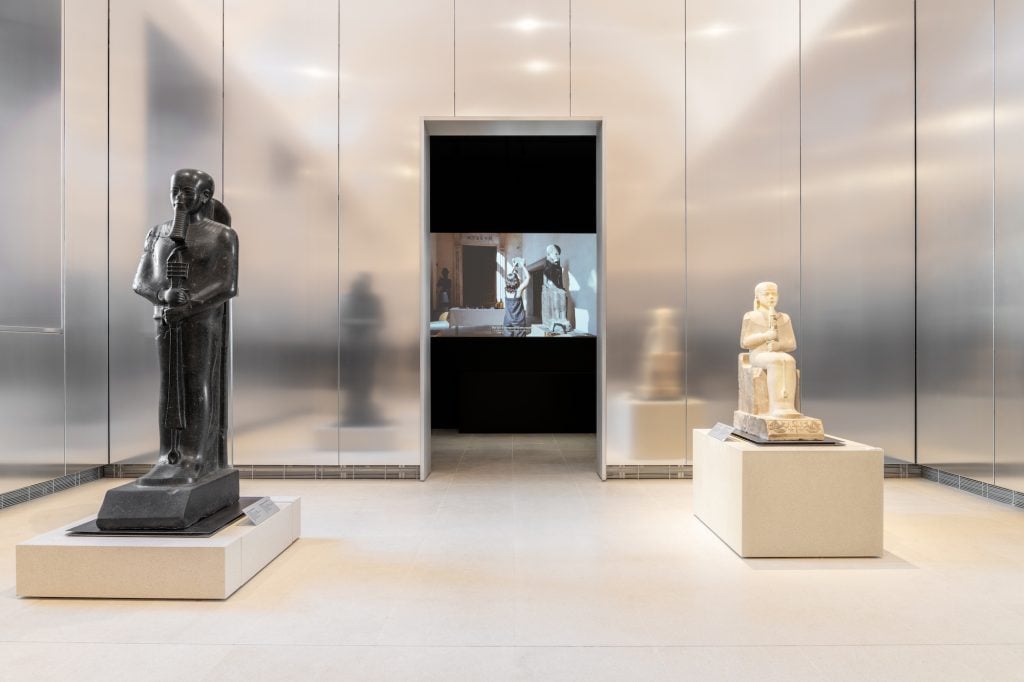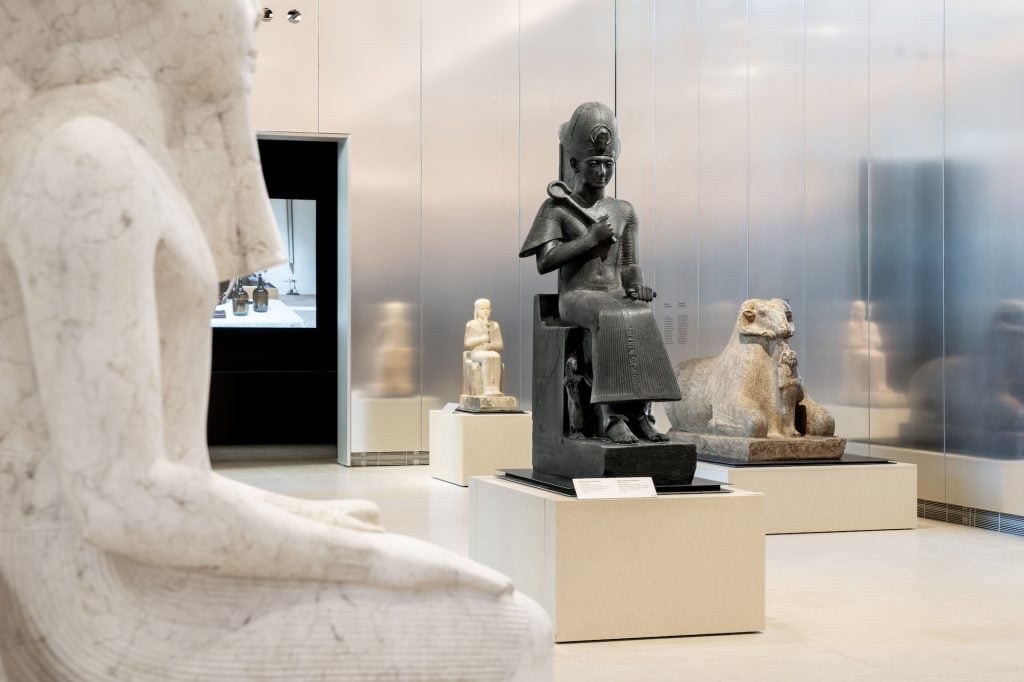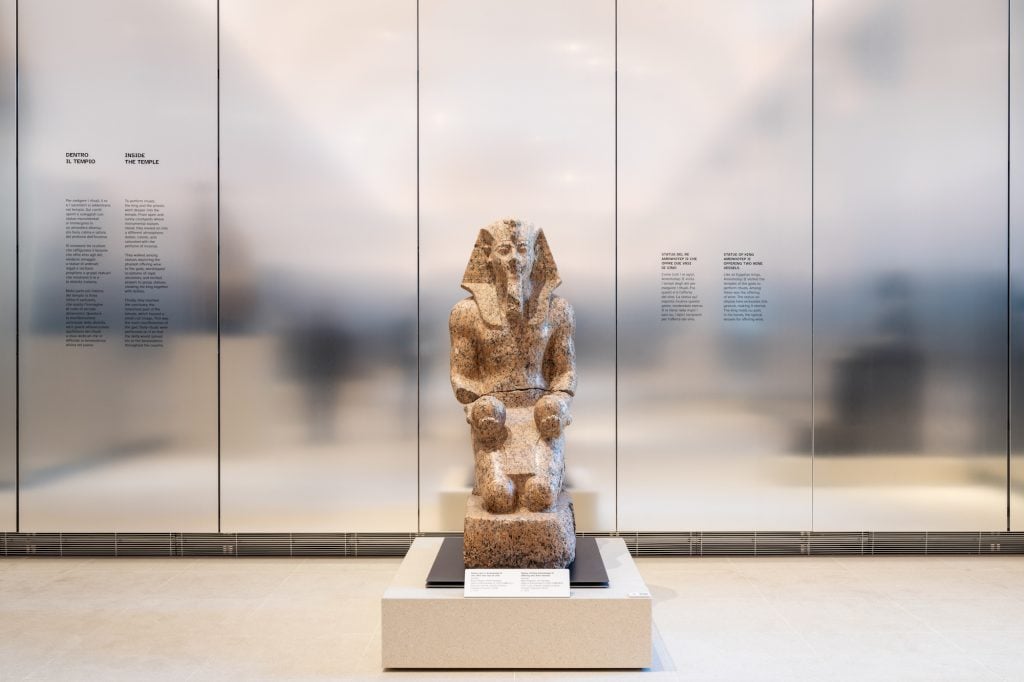Museums & Institutions
Step Inside the World’s Oldest Egyptian Museum, Newly Revamped for its Bicentennial
The institution has unveiled a series of new displays to celebrate.

The institution has unveiled a series of new displays to celebrate.

Verity Babbs

Museo Egizio, in the center of the historic Italian city of Turin, is the world’s oldest museum dedicated entirely to ancient Egyptian history. The museum is celebrating its 200th birthday this year, and this month it has reopened its newly renovated galleries with a series of new displays and exhibitions of contemporary artists.
Housed in the 17th-century palace of the Collegio dei Nobili, the Museo Egizio holds over 40,000 artifacts, including mummified remains, significant papyrus texts, an intact tomb transferred as a whole to the museum in the early 20th century, and an enigmatic anonymous sculpture of a woman called Hel that is dedicated to the gods of Memphis.

The Gallery of the Kings (2024). © Marco Cappelletti, courtesy of OMA and Andrea Tabocchini Architecture.
A new “Gallery of the Kings” was opened to the public on November 20, as part of an ongoing expansion by the Dutch studio Office for Metropolitan Architecture (OMA). OMA’s work has doubled the amount of gallery space, adding just over 5,900 square feet. It has also added a new direct entrance to the Temple of Ellesyia, a rock-cut temple originally near the archaeological site of Qasr Ibrim but donated to Italy after Italian efforts to rescue the temples of Nubia from flooding.
The museum was remodeled into a black-box space in 2006 by the Italian set designer Dante Ferretti, but the looming bicentennial milestone had the museum asking, according to press materials, “While these historic artefacts are highlighted as the centerpieces of a contemporary museum, can their original context still be conveyed? Can the gallery captivate a broad audience while imparting deep historical knowledge?”

The Gallery of the Kings (2024). © Marco Cappelletti, courtesy of OMA and Andrea Tabocchini Architecture.
The Gallery of the Kings contains several of Museo Egizio’s prized ancient sculptures, including examples from the ancient Egyptian city of Thebes (now named Luxor). The layout was designed to reconnect the statues to their original Theban context “rather than showcasing them as mere protagonists of a contemporary spectacle,” according to press materials. In order to better contextualize these statues, OMA has centered its design around a transition from darkness to light which the museum called “a concept that historically symbolized the process of creation in Egypt and is often associated with kings and gods.” This has been achieved through the contrast between a dark entryway and the bright space of the gallery itself, with immersive digital projections leading the way.
Statues have been arranged to mimic the journey into an ancient Egyptian temple, with visitors traveling through a first exhibition hall between two sphinx statues, flanked by statues of the war and plague goddess Sekhmet. The crescendo of the journey comes at the end with a statue of the pharaoh Seti II, originally found at the entrance to the king’s chapel at the Temple of Karnak in Luxor.

The Gallery of the Kings (2024). © Marco Cappelletti, courtesy of OMA and Andrea Tabocchini Architecture.
The Collegio dei Nobili’s original Baroque architecture, which was commissioned in 1678 by a local Jesuit, has also been fully uncovered as part of the redesign. The 17th-century statuary features vaults and high windows, which allow light in to the gallery space, and large windows which allow passersby to see the historic statues. Reflective aluminium panels and plaques with information about the statues help to keep the light bouncing around the room.
As part of the reopening, two contemporary art exhibitions were also launched. Lebanese artist Ali Cherri’s exhibition “Returning the Gaze” sees bronze prosthetic eyes created to counteract the fact that several artifacts in the collection “have had their eyes gouged out or their faces disfigured by looters and through acts of colonial destruction,” and a three-part exhibition by Egyptian artist Sara Sallam, “Through Tutankhamun’s Eyes: Alternative Perspectives on Egyptology,” is also on display until January.
OMA’s renovations are set to be competed in late 2025 and will include the opening of an Egyptian garden inside a new covered piazza.